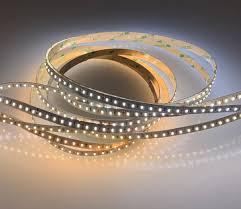Have you ever wanted to enhance your photos with beautiful and realistic light rays? Well, look no further! In this article, we will guide you through the process of creating stunning light rays using Adobe Photoshop. By following a few simple steps, you can add visual interest and drama to your images, making them truly stand out.
>>> see more about https://blls-lighting.com/blog/
Getting Started
To achieve a realistic light ray effect, you need to start with the right kind of image. Look for a photo that is backlit by the sun or any other large light source. This will provide the perfect environment for creating light ray effects. Once you have chosen your image, analyze the lighting and determine the direction in which the light rays should travel. With this information, you are ready to create the effect.
Paint Light with the Brush Tool
Creating light rays in Photoshop is easier than you might think. Start by creating a new layer and use the brush tool to paint relatively thin white strips along the paths where you want the light rays to appear. Keep the lines thin and well-defined, ensuring they align with the desired direction. Precision is not necessary at this stage; we will make the rays look more realistic in the next steps.
Adding Radial Blur
Now it's time to make the light rays blend in more naturally with the environment. Right-click on the layer where you created the rays and convert it to a Smart Object. This will allow you to add filters and effects while maintaining the ability to adjust the settings later.
Next, open the Filter menu, select Blur, and choose Radial Blur. Set the Blur Method to Zoom and position the center of the blur effect over the main light source in the image. Apply the radial blur and observe the results. Check the definition of the light rays and ensure that the blur effect originates from the light source. To get a better view of the effect, place a solid color fill layer set to black underneath the light ray layer.
>>> see more: What Is PoE Lighting?
Adjusting Color
To give the light rays a realistic golden color, we will use a Levels Adjustment Layer. Hold ALT or OPTN and click on the light ray layer to create a selection around its contents. Then, create a Levels Adjustment Layer above the light ray layer. The selection will automatically be loaded into a layer mask of the adjustment layer. Hide the original light ray layer created with the brush tool.
Using the Levels Adjustment Layer, adjust the shadow sliders in the Red and Green color channels to achieve the desired color for the light rays. Switch between the two channels as needed to match the color of the lighting in the image.
Finishing Touches
To add the final touches and make the light rays look as realistic as possible, duplicate the Levels Adjustment Layer. Use a soft, round brush with a low flow to paint on the layer mask of the new adjustment layer, creating broad and soft areas of light and color. Apply a radial blur to this layer to further soften the effect, and use a Gaussian Blur to blend it in with the rest of the image seamlessly.
Lastly, add a touch of noise to the light rays to make them appear more natural. Duplicate the noise effect from one Levels Adjustment Layer to the other, ensuring that the noise level matches the original photo.
And there you have it! With these simple steps, you can create stunning and realistic light rays in Photoshop, adding a touch of magic to your photos.
Frequently Asked Questions
Q: Can I use any kind of image to create light rays?
A: For the best results, choose an image that is backlit by the sun or a large light source. This will provide the ideal lighting environment for creating light rays.
Q: Do I need advanced Photoshop skills to create light rays?
A: No, creating light rays in Photoshop is a straightforward process that can be done with basic knowledge of the software. Just follow the steps outlined in this article.
Q: Can I adjust the color of the light rays?
A: Yes, you can easily adjust the color of the light rays using a Levels Adjustment Layer. This allows you to match the color of the light rays to the lighting in your photo.
Q: How can I make the light rays blend in naturally with the rest of the image?
A: By applying radial blur, using a soft brush to create soft areas of light and color, and using a Gaussian Blur to blend the effect, you can ensure that the light rays blend seamlessly with the rest of the image.
Q: Is it possible to create light rays without a light source in the original image?
A: While it is technically possible to create light rays without a light source in the original image, it is generally more challenging to achieve a realistic effect. It is best to start with an image that already has a light source present.
>>>> see more: Edgar M Downs
